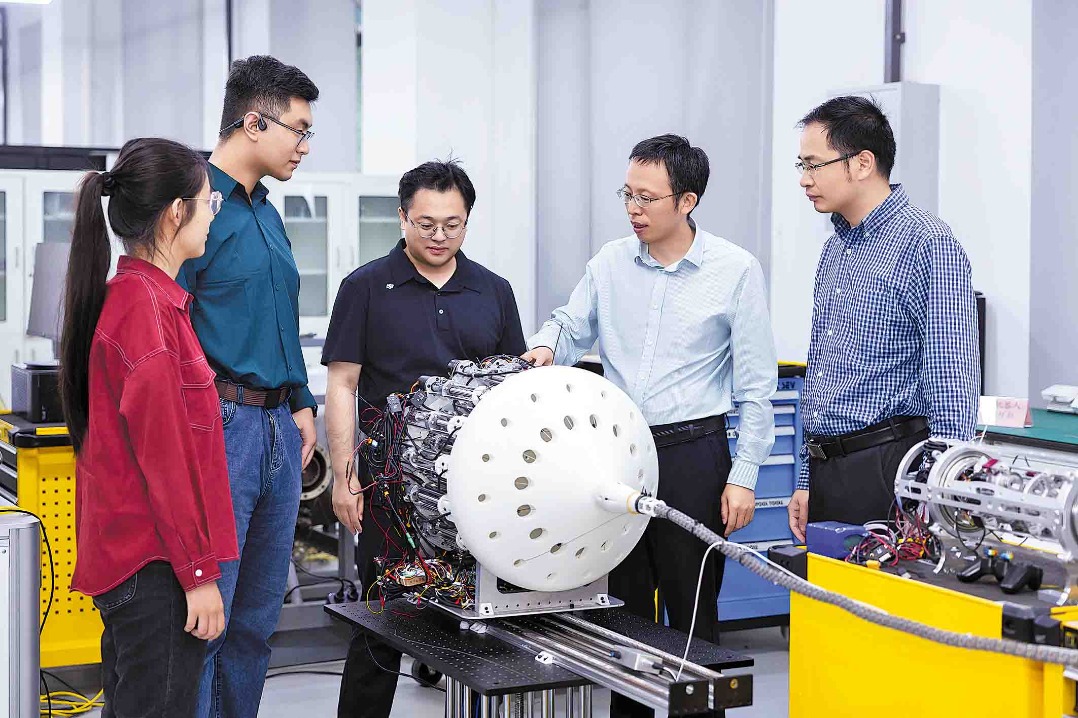British kettle firm shifts strategy to stay on the boil

Strix boss says innovation key to keeping competitive edge in large China market
China's manufacturing strength created a major growth story for the kettle control system maker Strix, based on the Isle of Man, but the company has had to refine its strategies in China as the country undergoes an economic structural shift.
The way Strix has pushed for technology advancement and intellectual property protection in recent years is a demonstration of how foreign firms are adjusting to China's diminishing advantage in low-cost manufacturing while also coping with increased domestic demand there.
| A saleswoman promotes kettles to a potential buyer in Qingdao, Shandong province. Huang Jiexian / For China Daily |
"It is a competitive market. We have to constantly innovate and come up with better methods for doings things with lower costs to stay ahead of competition in the market," says Paul Howard-Snowden, a director at Strix.
Strix, founded on the Isle of Man in 1951, has 70 employees in the self-governing British Crown dependency located in the Irish Sea between Britain and Ireland. It has an additional 750 employees in its factory in Guangzhou in South China, together with other workers around the globe.
The story of its China expansion started at the end of 1996, when the company established a China presence by working with one manufacturing company in Hong Kong and another in Guangzhou.
At the time, the world's kettle manufacturing industry, like much of the small domestic appliance industry, had started on a large scale to shift from European countries to original equipment manufacturers in China. So instead of supplying European customers directly, Strix had to form new relationships with Chinese OEM companies.
Initially, Strix chose the two Chinese companies to produce selected components and controls as suppliers, but within two years it established its own manufacturing company in Guangzhou to move manufacturing in-house.
Strix used the Guangzhou factory for manufacturing plastic molded components and assembling control systems, while the Isle of Man factory continued to make high-precision metal components shipped to China for inclusion in the assembly.
This arrangement gave Strix the advantage of being able to continue to source some components needed in the manufacturing process available only in Europe, and then combine that with lower-cost manufacturing in China.
Its European team also has to maintain good relationships with European customers like SEB (Tefal), Bosch, Siemens and Phillips, which purchase OEM kettles from China, to make sure these customers trust the Strix brand and are happy to buy kettles with Strix components.
Howard-Snowden says Strix has managed to maintain its market competitiveness because of its ability to continually innovate in the design and functionality of its control systems, as well as using its knowledge to help clients innovate in their own electrical appliances.

In recent years, Strix has faced increasingly strong competition from the Chinese domestic market. Also, rising labor costs in China continue to squeeze profit margins, which presents a big challenge for Strix when combined with falling prices.
The salaries of senior management and skilled engineers in China have risen so much that they are now equivalent to those in a mature market like the United Kingdom. Strong demand for these skilled workers in China also means they are tough to find, Howard-Snowden says.
"Internally this is the biggest battle because it means the people with technical skills needed to help us grow our business are so difficult to find," he says.
Even workers with fewer skills on the factory floor are experiencing big salary increases, Snowden says. When Strix established its China factory, these workers cost about 10 percent of the equivalent British labor, but the cost has risen to well over 25 percent, he says.
Although this number may not seem large, in the scheme of things it could be significant for companies that are considering moving their manufacturing to China because the cost of relocation and startup is also high.
"If any manufacturing company is now asking if they should move to China, they must carefully consider where their end markets are and weigh up any labor cost advantages against logistics and quality costs. If a business is established in China already, then that is a different story," he says.
But for Strix, one big justification for continuing to manufacture in China is the size of the Chinese consumer market for kettles, now the biggest kettle market in the world. It still makes perfect sense for Strix to be predominantly in China.
"I remember when we started manufacturing in China, few Chinese consumers used electric kettles, as the Chinese consumers normally used water from large bottles mounted in hot and cold dispensers. But now the Chinese lifestyle has massively changed," says Howard-Snowden.
The eastward shift of the kettle industry has also led to many changes within Strix. Its global chief executive officer and chief financial officer are now based in Hong Kong, to be close to the market, though the engineering director and his core technical team is still based in the Isle of Man.
The company also sees competition from local firms in China as an incentive to constantly innovate, to provide more effective and safe control systems that allow users peace of mind.
In addition, Strix works hard to enforce patent protections surrounding its innovations, especially in the Chinese market, Howard-Snowden says. As old patents expire, company engineers come up with innovations that can be patented to stay ahead of those trying to copy the company's technology.
Globally, there have been many changes in the kettle-making industry, too, most notably that the prices of kettles have fallen substantially in the past decade despite rising costs, and also commodity prices have been on a roller-coaster ride. This trend has made life difficult for everyone in the supply chain, including Strix, the Chinese OEM producers, and kettle brands.
But Howard-Snowden says he remains hopeful. "We will continue to innovate, improve our quality and efficiency, and drive costs down," he says.
cecily.liu@mail.chinadailyuk.com
(China Daily European Weekly 12/18/2015 page8)
Today's Top News
- Israel agrees to conditions to finalize 60-day Gaza ceasefire
- Xi: Advance building of unified market
- US chip restrictions backfiring
- Consumption push promises summer tourism boom
- Namibian FM highlights China's role in progress
- Policy effort to bolster growth bears fruit































